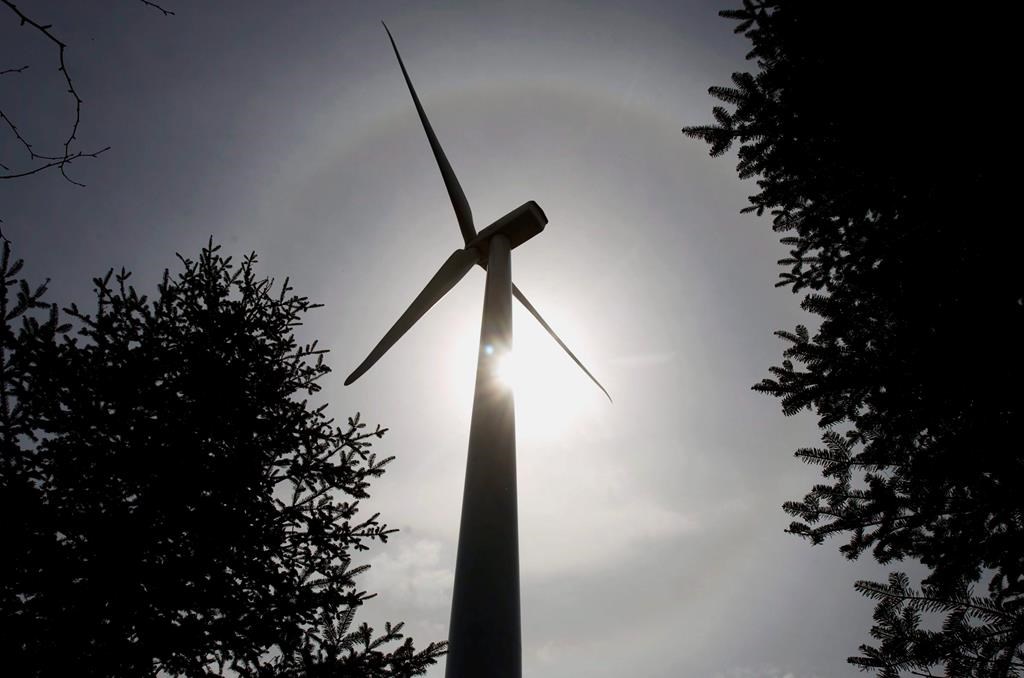A environmental group’s study is imagining Nova Scotia in 2030 as a province with tens of thousands of electrically powered cars, a link to Hydro-Quebec’s renewable power, and widespread use of home heat pumps pulling warmth from the coastal air.

The report commissioned by the Ecology Action Centre lays out a future Nova Scotia that abandons centuries of coal-fired generation, and differs in key areas from plans by the Liberal government of Stephen McNeil.
“The deep retrofit of 250,000 single-family dwellings and 80,000 apartments … will require a small army of highly skilled professionals and tradespeople,” reads the conclusion of the 61-page report released Monday.
READ MORE: Nova Scotia tables bill aiming for net-zero carbon footprint by 2050
Existing plans by the province don’t move at the pace envisioned in the Ecology Action Centre’s plan.
Under the terms of a proposed agreement with Ottawa, Nova Scotia could still emit millions of tonnes of greenhouse gases from burning coal for as many as 10 years or more past the national deadline of a coal phase-out by 2030.
However, Stephen Thomas, energy campaign co-ordinator with the centre, argues the environmental group’s view is realistic and “an effective emergency response to reducing carbon emissions.”
- High benzene levels detected near Ontario First Nation for weeks, residents report sickness
- Ontario takes action against chemical plant after Aamjiwnaang First Nation residents fell ill
- Enter at your own risk: New home security camera aims paintballs at intruders
- Fishing vessel with crane, net arrives in Zeballos for orca calf rescue
The modelling exercise carried out by consultant Ralph Torrie foresees a power grid made up of about 90 per cent renewable energy: 43 per cent each from wind and hydroelectricity and five per cent solar, with the remaining nine per cent coming from natural gas.
The study says solar installations could be spread over the flat rooftops of warehouses, big-box stores and other large commercial and institutional buildings.

Meanwhile, hydroelectricity could be expanded with a second link to New Brunswick that imports electricity from Hydro-Quebec, adding to the undersea power cable coming from Labrador’s Muskrat Falls project.
The analysis assumes major investments in renewables over the coming decades, averaging about $1.57 billion a year.
However, it predicts those costs would be offset by savings in annual electricity costs, alongside lower costs for gasoline and coal.
The change in the typical home would be quite notable when it comes to heating supplies, as the use of electricity or oil furnaces for space heating currently remains the norm.
The report says heat pumps are a more effective use of electrical energy because they extract heat from the surrounding environment and “can thereby leverage the electricity they consume by a factor of three or more.”
The electrification of vehicles is also seen by the report’s authors as a key part of the low-carbon future.
There are currently about a half million cars, SUVs and pickups in Nova Scotia, but in the low carbon scenario by 2030 about a quarter of those vehicles would be hybrids that can be plugged in.
There would also be about 75,000 battery-powered electric vehicles, or 15 per cent of the total.
As it stands, the province still has the most coal-dependent electricity grid in Canada with eight coal-fired generation units operated across four plants. All of the plants are owned by the province’s privately held utility, Nova Scotia Power.
Planning documents from the utility have previously projected that coal would continue to play some part in its energy mix until 2042.
Jason Hollett, the Environment Department’s executive director of climate change, has said replacing coal plants before 2030 would mean an increased reliance on natural gas for years into the future, and the province would rather explore cleaner options over that longer period while meeting federal emissions-reduction requirements.
In an email, Rachel Boomer, a spokeswoman for the province’s Environment Department, says the province welcomes the Ecology Action Centre report and the province will lay out its climate change strategy next year.
A spokeswoman for Nova Scotia Power didn’t provide an executive from the firm for comment on the report but said the utility is planning its own “long-term energy future.”
“This strategy, known as an Integrated Resource Plan, will look out 20 years,” wrote Andrea Anderson.
She said the plan will be filed by mid-2020 with the Nova Scotia Utility and Review Board.
This report by The Canadian Press was first published Nov. 25, 2019.




Comments